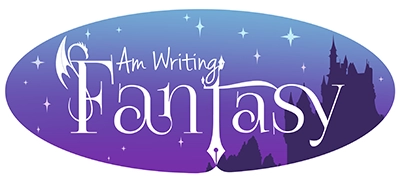What do you think of when I say ‘the dark forest’ or ‘the magical glade’ or even the ‘the tiny village’?
Ideas – preconceived ideas – immediately spring to mind, don’t they? A recent article over at Mythic scribes talked about metaphor and how authors use it as the foundation of story building – to our advantage and not. There is a lot of power by tapping into this wealth of existing notions. A writer doesn’t need a thousand words to describe a setting but can say ‘dark forest’ or ‘ancient forest’ to conjure a scene.
And what is the most amazing thing about this method is that my dark forest becomes the reader’s dark forest created from the reader’s previous ideas. The reader begins to take ownership of the story, investing imagination, as well as time, into the novel. Isn’t that really part of the ‘hook’ to building a fan – having them love a story so much that it is real to them? Well, it is possible in part because every writer pulls from a background framework of ideas.
Which is also part of the problem. Readers crave fresh ideas. Writers want their story to be remembered. There needs to be something to make the dark forest stand out from all the others in every tale. But a writer doesn’t want to mess with the pre-established framework too much. When it has to be explained that red really means yellow and green is really purple but blue is blue except it is called tagwath… well, that is more learning and creating than most readers want to get into.
World building is a balancing act of creating nuances to enliven a scene while leaving enough unsaid that the reader creates the world using the writer’s suggestions. So how much is enough? Too much?
A setting only needs a few details to make it unique to a story. A good example is from the novel/movie the Princess Bride. Think of the fire swamp. It holds three secrets, right? Flame spurts, lightning sands, and R.O.U.S.s. They are the first thing that comes to mind when I hear Fire Swamp followed quickly by remembering the book and movie. Isn’t that what every author works toward? Name and world recognition!
And really, the details are what you want to apply to the pivotal places. Not every cave/forest/island needs to be absolutely unique. Maybe they only need one aspect of note to add to the description of ‘island with steep cliffs’. Maybe the cliffs are black or cliff dwelling birds are diving for fish. Maybe they’re not birds… There you go. Unique enough, sail on.
But those big settings where the adventure really unravels… that is what needs a bit more than ‘ancient forest.’ Give the reader something else – but without dumping every trick in your world building toolbox on them at once! The forest of the Kith in my epic fantasy series is ancient… and massive. Sailing by at night, one of the characters think the trees are coastal mountains. I mention little bits about the mist high in the canopy hundreds of feet overhead, and living houses entwined in the branches like mistletoe. But you know, I never mentioned if the trees were evergreen, deciduous, or tropical… but what did you see/create? 🙂
Now go write something!










These are some great suggestions!